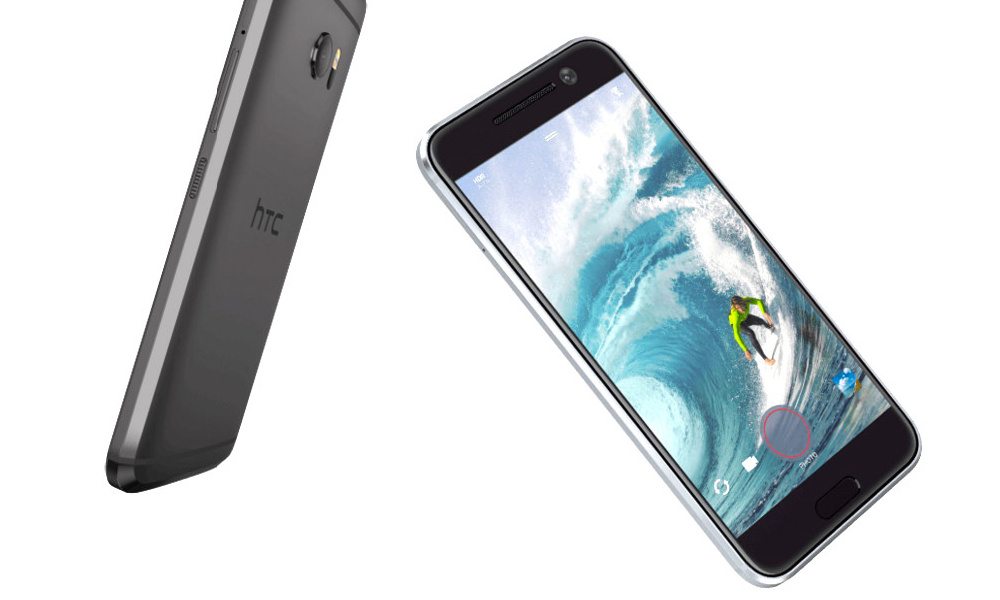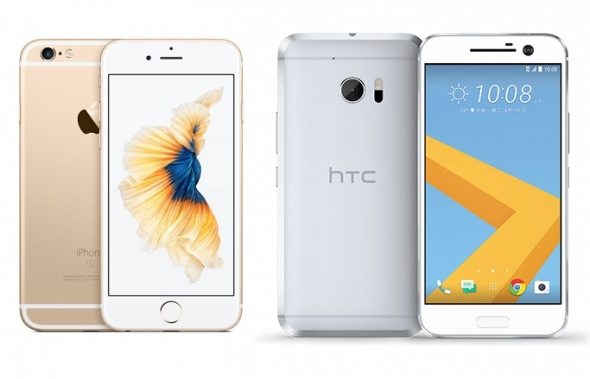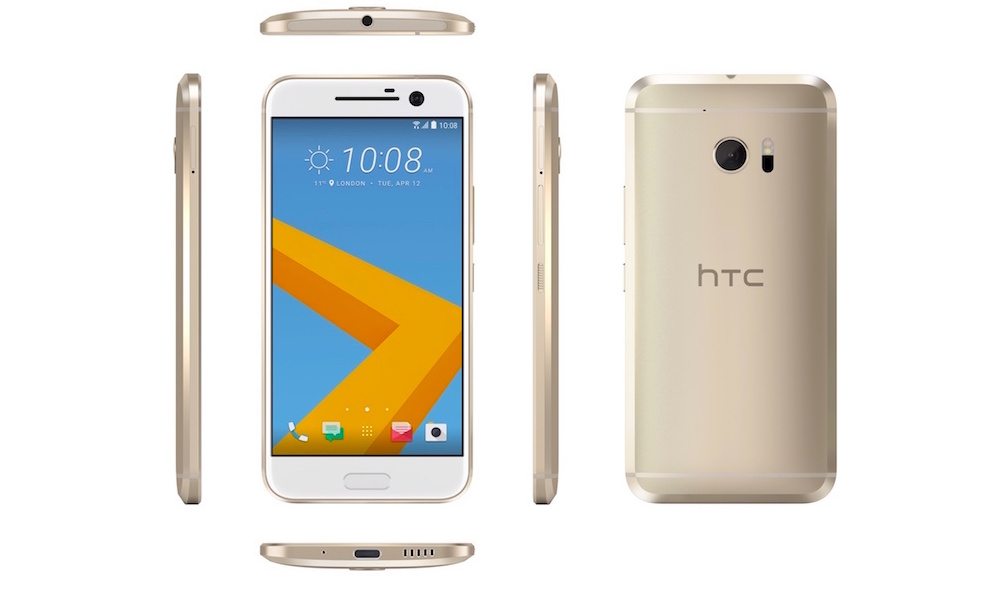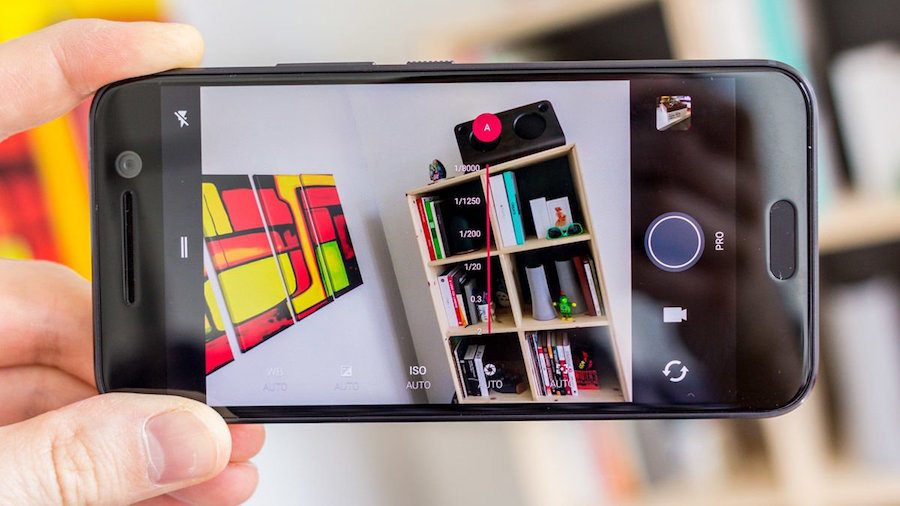Head-to-Head Comparison: HTC 10 vs iPhone 6s

Toggle Dark Mode
Although HTC has always made quality phones, it has struggled in recent years to keep its place in the market with solid competition coming from Samsung, LG, and of course, Apple. However, HTC has recently released their latest flagship phone, the HTC 10.
Featuring a complete redesign from HTC’s previous flagships, and some very impressive hardware, the HTC 10 might place the company right back in the mix as one of the top smartphones available out there. Curious as to how it stacks up against Apple’s iPhone 6s? Let’s take a look…
Design & Dimensions
The iPhone has always had an iconic design, easily recognizable from any other phone from a distance. Many Android phones have essentially been aesthetic clones of either the iPhone or other Android devices. The HTC 10 has an original, yet beautiful design with clean lines and a slightly curved back.

The HTC 10 is a bit larger than the iPhone 6s – roughly 6mm taller, 5mm wider, and almost 2mm thicker, in fact. The HTC 10 is also a bit heavier, as well, weighing in at 161g vs the 6s’ 143g. Both have an all-aluminum case, and both certainly feel like premium devices. However, although it is a bit larger, many users feel that the rounded back gives the HTC 10 a bit more ergonomic design.
And once again, although only slightly larger than the 6s, the HTC 10 uses the real estate on the design more efficiently, packing a 5.2-inch screen into the device as opposed to the 6s’ 4.7-inch screen, as well as a 3,000 mAh battery, larger than the 6s’ 1,715 mAh battery and even larger than the 6s Plus’ 2,750 mAh battery.
Specifications
On paper, the HTC 10’s specs are much more impressive than the iPhone 6s’. The HTC 10 features a Snapdragon 820 64-bit quad core 2.2GHz processor – the same one found in Samsung’s Galaxy S7 and the LG G5 – as opposed to the 6s’ A9 64-bit dual core 1.85GHz processor.

The HTC also carries 4GB of RAM – double that found in the 6s. However, as we have often seen before, those impressive specs don’t necessarily translate into impressive real-world performance. The iPhone 6s routinely beats the HTC 10 in real-world speed tests, booting up, loading apps, and navigating the OS faster than the HTC 10.
Although the HTC 10 packs impressive hardware, the Android OS system is just too fragmented to perform as quickly as Apple’s – the streamlined, optimized, and closed iOS operating system just performs much snappier.
Display
Both the iPhone 6s and HTC 10 utilize LCD technology in their displays, forgoing the more state-of-the-art AMOLED technology. And once again, the HTC 10 packs in much more impressive specs on paper. The HTC 10’s display features incredible pixel density, with a 2,560 x 1,440 resolution at 564 pixels-per-inch (PPI), while the 6s’ display features a 1,334 x 750 resolution at 326 PPI.
Although the HTC 10’s numbers are impressive, both displays perform admirably, sporting incredible color accuracy and temperature. The iPhone’s display, however, is just a touch brighter, and we can’t ignore the addition of 3D Touch in the iPhone 6s – many users who have gotten used to the pressure-sensitive display would likely have a hard time going back to a normal one.
Camera
The cameras in Apple’s iPhone line have always produced stellar results relative to the competition. And HTC’s cameras have always received a bit of criticism for their performance. However, many Android phones, including Samsung’s Galaxy S7 and the LG G5 are sporting very impressive camera performance these days, and HTC is looking to right their past wrongs with the 10’s camera.
Both the iPhone 6s and HTC 10 feature 12MP rear-facing cameras, and 5MP front-facing cameras. The HTC 10’s camera sports a F1.8 aperture as compared to the iPhone 6s’ F2.2 aperture (a smaller number means the camera will theoretically let more light in), and the HTC 10’s camera has a slightly bigger pixel size, again, theoretically letting more light into its photos. Add in the HTC 10’s optical image stabilization, and you have a bit better low-light performance than the iPhone 6s.
Battery Life
As was previously discussed, the HTC 10 features a very impressive battery at 3,000mAh, compared to the iPhone 6s’ 1,715mAh. However, the HTC 10’s beefed up specs take up a lot of power, and the huge battery leads to good, but not incredible results. The HTC 10 will last a full day of pretty heavy usage – maybe even a day and a half of moderate usage. When put through more battery-intensive testing, the HTC 10 beats out many of its rivals, including the Samsung Galaxy S7, LG G5, and Chinese staple Huawei P9. However, the high-resolution display, quad core processor, and fragmented operating system take a toll on the battery, leaving the iPhone 6s still at the head of the pack.
In PhoneArena’s battery benchmark test, the HTC 10 lasted 7 hours and 10 minutes before it drained, second only to the iPhone 6s, which lasted 8 hours and 15 minutes. The HTC 10’s battery life is impressive, but it’s not the top of the pack. It should be noted, however, that with the improvements to Android’s battery-saving “Doze” feature in the upcoming Android N OS, the HTC 10 might be able to take over as the king of mobile battery life.
One battery-related aspect the HTC 10 does outperform the iPhone 6s in, however, is charging time. The HTC 10’s USB-C quick charger will bring the battery from dead to fully charged in 100 minutes, and from dead to 50% in only a half an hour. The iPhone 6s’ Lightning charger takes quite a bit longer – 150 minutes from dead to fully charged.
Other Features
Apple has included a fingerprint sensor in their phone line since the iPhone 5s in 2013, but the HTC 10 is the first in a long line of HTC flagship phones to include the feature. Both are embedded in the phone’s “home” button (although the HTC 10’s home button acts more as a soft key than the iPhone’s physical button), and both perform admirably.
Apple’s iPhone 6s utilizes the proprietary Lighting port for charging and data transfer, while the HTC features the increasingly common USB type C for charging and data transfer. The USB-C cable is more durable and versatile than Apple’s proprietary cables, and will likely become conventional in the coming years – Apple has even chosen USB-C over Lightning for their latest MacBook line.
The HTC 10 also supports one rather large feature that has always been notably absent in the iPhone line – expandable storage. While the iPhone 6s is available in three storage options – a meager 16GB, 64GB, and (very expensive) 128GB, the HTC 10 comes with two stock storage options in 32GB and 64GB (although the 64GB option isn’t available in the US). However, with the HTC 10’s MicroSD slot, storage can be expanded to up to 2TB of data, which is treated the same as internal memory in Android’s latest operating systems.
In Conclusion
HTC’s latest phone is quite the improvement over their past several offerings, and it’s safe to say that it’s a very impressive device. It holds several advantages over the iPhone 6s, but performance doesn’t stack up to the Apple flagship in other areas. Android users will assuredly be very pleased with the HTC 10’s experience, and iPhone users need not jump ship, as both phones perform comparably.
The HTC 10 is certainly no “iPhone killer”, or even a “Galaxy S7 killer”, but it certainly holds its own against any of the other top-tier phones on the market. It’s clear that both are superb phones, and if you’re choosing between the two, your decision will only come down to which operating system you prefer.
Tell us about your experiences with Android phones. Were they good or bad?
Let us know in the comments!







